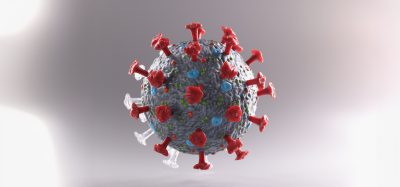New “map” of TTLL7 protein helps researchers understand cellular transport
Posted: 12 May 2015 |
Scientists from TSRI and NIH have mapped out the structure of an important protein involved in cellular function and nervous system development – TTLL7…
Scientists from The Scripps Research Institute (TSRI), working closely with researchers at the National Institutes of Health (NIH), have mapped out the structure of an important protein involved in cellular function and nervous system development.
The new structure provides crucial information for understanding how the protein binds to cellular components. It is also the first structure determined of any ligase in the tubulin tyrosine ligase-like (TTLL) family.
Mutations in TTLLs have been linked to a range of neurodegenerative diseases
Scientists have been especially curious about the role of TTLLs because mutations in these proteins have been linked to a range of neurodegenerative diseases, including retinal dystrophy and the rare Joubert syndrome.
“This protein is highly expressed in the nervous system and has an integral role in neuronal development,” said Elizabeth Wilson-Kubalek, senior staff scientist in Professor Ron Milligan’s laboratory at TSRI.
While previous research had shown that TTLL7 modifies microtubules (hollow tubes that transport cellular components and act as highways and scaffolding in the cell) by adding one or more molecules of the amino acid glutamate, exactly how has remained a mystery. The new study goes a long way to answering that question.
Findings add to the growing understanding of the ‘tubulin code’
In the new study, the researchers saw for the first time how three positively charged regions of TTLL7 interact with the microtubule substrate. Most importantly, they found that the active site of TTLL7 is ideally positioned to contact the negatively charged “beta-tail” of beta-tubulin, one of the two protein building blocks of the microtubule polymer (alpha- and beta-tubulin). The alpha and beta “tails” that protrude from the microtubule surface are known sites for modification, which in turn, determine which motors and associated proteins will bind to the microtubule.
These findings add to the growing understanding of the “tubulin code”—a phenomenon where TTLL7 and similar proteins add amino acids to microtubules and prompt them to fast-track certain proteins for transport.
“It’s like opening up new lanes of traffic,” said Gabriel Lander, an assistant professor at TSRI.
Researchers able to solve the structure of TTLL7 by combining X-ray crystallography and electron microscopy
The researchers were able to solve the structure of TTLL7 by combining x-ray crystallography and electron microscopy (EM). The team at NIH, led by Antonina Roll-Mecak, used x-ray beams to create an atomic structure of the crystallized TTLL7 protein. The team at TSRI then used electron microscopy, which pelts samples with high-energy electrons, to see what TTLL7 looks like when bound to a microtubule. The atomic structure from the NIH team could be fit into the lower-resolution 3D EM image reconstruction to identify the regions of the protein that interacted with the microtubule surface.
“Merging two structural techniques and biochemistry led us to a more complete story,” said Wilson-Kubalek. “It’s really exciting to see something no one has ever seen before.”
Wilson-Kubalek compares the research to putting together a puzzle. With this new piece in place, the researchers can tackle new aspects of microtubule function and work toward applications in human health.
“The take-home message is that this is the first time we’ve seen how this protein sits on the microtubule, and this is going to be of major importance down the road,” Wilson-Kubalek added.
The new research was published online ahead of print by the journal Cell.
Related topics
Amino Acids, X-ray Crystallography
Related organisations
National Institutes of Health (NIH), The Scripps Research Institute (TSRI)







